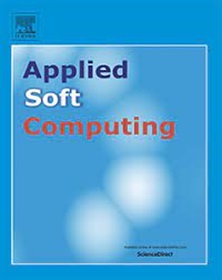边缘检测的量子模糊逻辑:NISQ硬件演示
IF 6.6
1区 计算机科学
Q1 COMPUTER SCIENCE, ARTIFICIAL INTELLIGENCE
引用次数: 0
摘要
量子计算提供了超越经典方法提高计算效率的潜力,但由于有噪声的中等规模量子(NISQ)硬件的局限性,即有限的量子比特数,有限的连接以及噪声和退相干的存在,实际实施仍然具有挑战性。本研究提出了一种新的边缘检测方法,利用最近开发的量子模糊推理引擎,在NISQ设备上实现。我们为其实现引入了优化的量子电路,减少了量子比特需求和门深度,以提高NISQ硬件的执行力。为了克服与大规模图像处理相关的限制,采用了混合量子经典查找表方法。在经典执行、理想量子模拟、噪声量子模拟和NISQ硬件计算等不同条件下,对Berkeley Segmentation Data Set和benchmark 500数据集的边缘检测性能进行了评估。结果表明,基于量子模糊逻辑的边缘检测方法使用更少的运算,达到了与经典方法相当的结果,标志着向实际的量子增强图像处理迈出了一步。本文章由计算机程序翻译,如有差异,请以英文原文为准。
Quantum fuzzy logic for edge detection: A demonstration on NISQ hardware
Quantum computing offers the potential to enhance computational efficiency beyond classical methods, but practical implementation remains challenging due to the limitations of Noisy Intermediate-Scale Quantum (NISQ) hardware, namely, restricted qubit counts, limited connectivity, and the presence of noise and decoherence. This study presents a novel approach to edge detection by leveraging a recently developed Quantum Fuzzy Inference Engine, implemented on a NISQ device. We introduce an optimized quantum circuit for its implementation, reducing qubit requirements and gate depth to improve execution on NISQ hardware. To overcome constraints related to large-scale image processing, a hybrid quantum–classical lookup table approach is employed. Edge detection performance is evaluated on the Berkeley Segmentation Data Set and Benchmarks 500 dataset under different conditions, including classical execution, ideal quantum simulation, noisy quantum simulation, and NISQ hardware calculation. Results demonstrate that the quantum fuzzy logic-based edge detection achieves outcomes comparable to classical methods by using fewer operations, marking a step toward practical quantum-enhanced image processing.
求助全文
通过发布文献求助,成功后即可免费获取论文全文。
去求助
来源期刊

Applied Soft Computing
工程技术-计算机:跨学科应用
CiteScore
15.80
自引率
6.90%
发文量
874
审稿时长
10.9 months
期刊介绍:
Applied Soft Computing is an international journal promoting an integrated view of soft computing to solve real life problems.The focus is to publish the highest quality research in application and convergence of the areas of Fuzzy Logic, Neural Networks, Evolutionary Computing, Rough Sets and other similar techniques to address real world complexities.
Applied Soft Computing is a rolling publication: articles are published as soon as the editor-in-chief has accepted them. Therefore, the web site will continuously be updated with new articles and the publication time will be short.
 求助内容:
求助内容: 应助结果提醒方式:
应助结果提醒方式:


